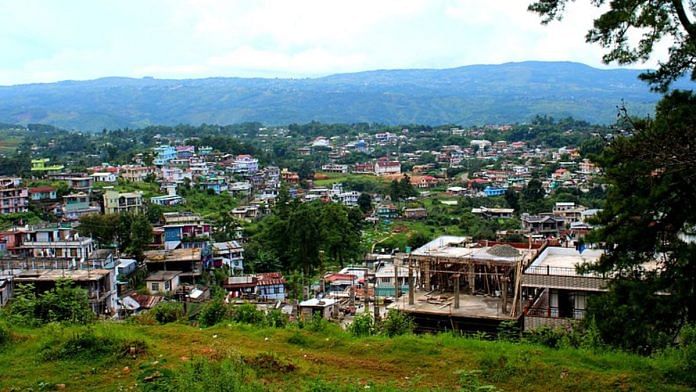Thank you dear subscribers, we are overwhelmed with your response.
Your Turn is a unique section from ThePrint featuring points of view from its subscribers. If you are a subscriber, have a point of view, please send it to us. If not, do subscribe here: https://theprint.in/subscribe/
Meghalaya, “Abode of the Clouds” proposed by geographer S.P. Chatterjee, was formed in 1972, carved out of two districts from the state of Assam: united Khasi and Jaintia Hills and Garo Hills, bound by divisions of Mymensingh and Sylhet of Bangladesh to the south, and the state of Assam is to the north and east with the river Brahmaputra to the west.
The capital city Shillong, which the British imperialist authorities called the “Scotland of the East”, one of the wettest regions of India, has been a hub of education and commercial activity of the north east.
Prior to the partition of India in 1947, Sylhet district was part of the Assam Province. Post partition the geographical district of Sylhet became a constituent of East Pakistan, now Bangladesh, and in the aftermath of the communal clashes in East Pakistan, the majority Bengali Hindu population of Sylhet fled to the Khasi Hills, Cachar and other districts of Assam.
A large section of the Sylheti population settled in Shillong, in residential areas such as Laithmukrah, Jail Road, Rilbong and other colonies. Most of the Sylheti’s earned their livelihood as teachers, professors, engineers, clerks in government offices and petty shopkeepers.
With a relatively visible and large migrant population, the local residents became apprehensive about their dilution of identity and the demographic imbalance. Post statehood in 1972, regular low-level disturbances started occurring towards “dkhars” coined for outsiders. A large number of outsiders were killed in the disturbances with no apparent support from the police and local administration.
With unstable political environment and opportunities in state institutions limited, the younger generation of mainly non-tribals, was constrained to seek options outside Shillong/ Meghalaya. Intermittent violence continued through the 1980’s to 1990’s, with some extremely tense days of intense instability, resulting in the silent migration of outsiders from Shillong and other parts of Meghalaya. Residential areas and commercial establishments changed hands from non-tribal to tribal ownership.
What is left of the outsider population of Shillong? A large section of outsiders left in Shillong, are mainly with low level skills, compelled to stay, to eke out a livelihood. Shops of some outsiders in the commercial centre of Shillong, Police Bazar, continue to do business, but ostensibly at a lower scale.
Broadly, with the Sylheti population forced to moveout and homogenization of the local population, has Shillong benefitted by being more conducive to business and innovation? Apparently not, with per capita income of just around Rs. 90,000 for fiscal 2022, with other similar states such as Himachal Pradesh doing much better. If other parameters are considered, such as addition of factories from 2004 to 2020, Meghalaya has added about 100 factories (58-158) while the adjacent larger state of Assam, has furthered its tally by 3486 factories (1710-5196).
However, a number of central and private educational institutes have been established, such as Indian Institute of Management, leveraging the historical educational prominence of Shillong which is likely to be advantageous in the future.
With the past societal issues out of the way, is Shillong at the crossroads? Potentially. Can the tepid growth be reversed, since it has a huge potential for tourism? Although, there are historical apprehensions in the minds of local residents about outsiders, Shillong/Meghalaya has to open its arms for the tourism economy to grow exponentially, with its unique selling proposition of scenic beauty, food, the love for music (Shillong Chamber Choir is acclaimed worldwide) and many more attractive benefits. With an expected tourist footfall of 15 lakhs by 2024, this figure could be further expanded, if the private sector is encouraged to develop resorts sustainably enroute to Shillong. At present, with excellent road connectivity with Guwahati and operational airport at Umroi, Shillong/Meghalaya is poised for a positive future.
While strides have been taken in promoting local handicrafts and products such as honey, but these unique merchandises need more visibility pan India. In this regard, Shillong / Meghalaya could also actively pursue business opportunities in the neighbouring countries, such as Bangladesh and Nepal.
With the projection of India being a developed society by 2047, Shillong can be a pivot for economic activity for the north-east. It all depends in which way the people want to steer their destiny!
These pieces are being published as they have been received – they have not been edited/fact-checked by ThePrint.

